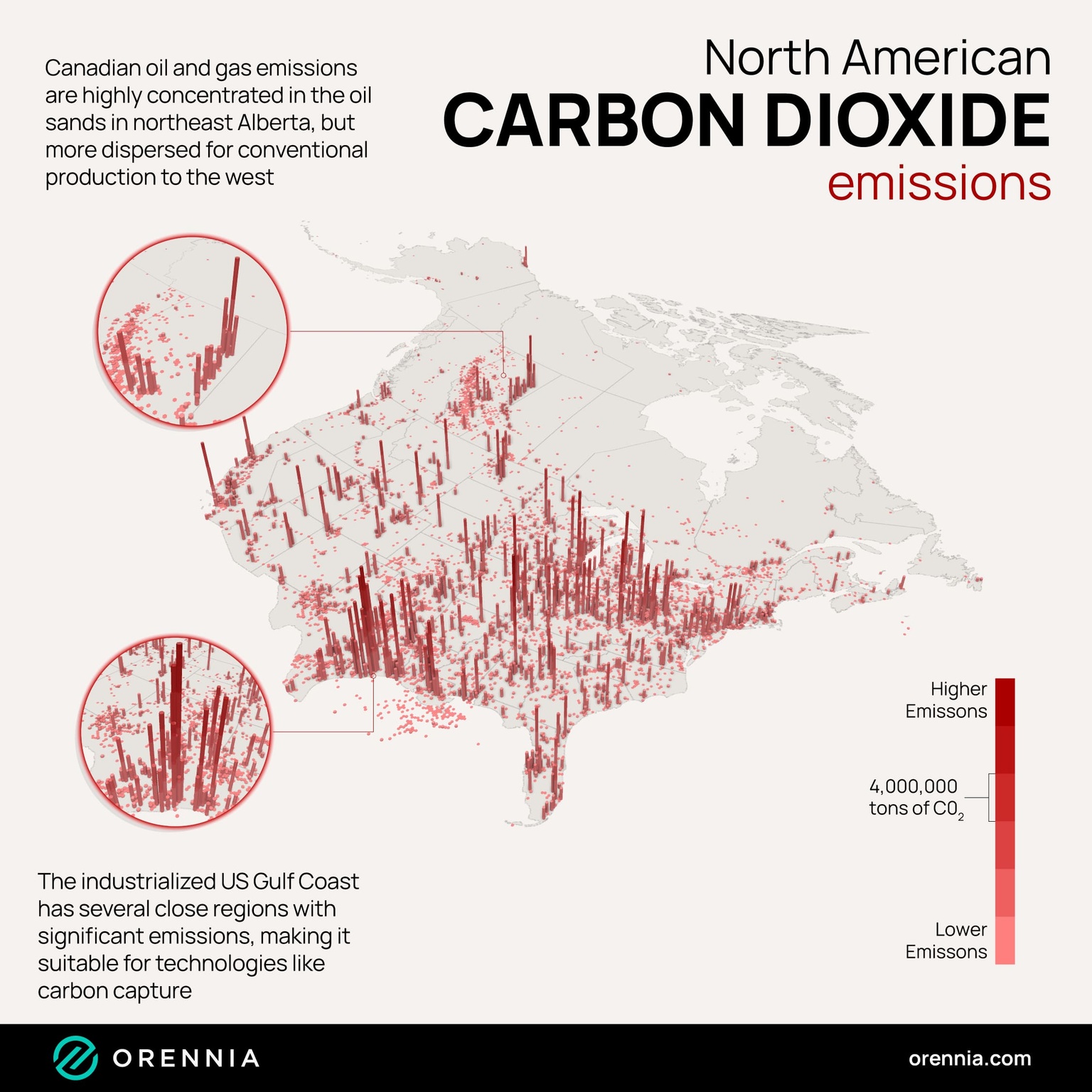
Aaron Foyer
Vice President, Research and Analytics

Aaron Foyer
Vice President, Research and Analytics

Carbon dioxide emissions dispersed across North America, though concentrated in regions with high populations and industrial activities. Areas with more aggregated emissions are focus areas for carbon capture technologies, low-carbon fuel development and clean manufacturing.
Emissions are spread across the US, concentrated in regions with significant populations and large industrial or manufacturing sectors. The six largest are Texas, California, Florida, Pennsylvania, Ohio and Louisiana
Texas leads the US in carbon dioxide emissions due to its substantial oil and gas industry, including drilling, refining, and petrochemical manufacturing. The state is a major producer of natural gas and oil, and it also has numerous coal-fired power plants that contribute significantly to its emissions. The industrial sector is another key source of carbon dioxide, especially chemical production and refining.
California has a large population, extensive transportation sector and diverse industrial activities, leading it to high emission levels. Industrial activities, including manufacturing and technology, also contribute to emissions, though California has significant efforts in place to reduce emissions through renewable energy sources such as solar and wind.
Florida has both a large population and a tourism-driven economy, which increases demand for electricity and transportation. The state relies heavily on natural gas for power, accounting for three-quarters of the states’ generation. The transportation sector is another significant contributor
Pennsylvania has high emissions, primarily due to its energy production sector, including coal mining. The state is a leading producer of natural gas from the Marcellus Shale and also has a significant number of gas-fired power plants. The industrial sector, particularly steelmaking and chemicals, also contributes to Pennsylvania’s emissions.
Ohio has a large emissions-intensive from its industrial sector, which includes steelmaking, chemicals and automotive. The state relies heavily on natural gas and coal for electricity, together accounting for nearly three-quarters of generation. Natural gas use has been increasing, lowering the carbon intensity of the state’s power. Industrial processes and fuel combustion in manufacturing are major contributors to Ohio’s emissions.
Louisiana has an extensive petrochemical industry and oil refining operations. The state is a major producer of oil and gas on top of numerous refineries and chemical plants along the Gulf Coast.
Just two provinces account for 60% of Canadian emissions – Alberta (38%) and Ontario (22%)
Alberta’s emissions are largely driven by its oil and gas industry. The industry’s emissions are roughly split evenly between the energy-intensive oil sands and conventional production, though are much more concentrated in the oil sands. The province relies heavily on natural gas for electricity, accounting for 60% of generation, though renewables have been growing significantly in recent years.
Ontario has the largest population in the country and its emissions are primarily driven by the transportation sector. The industrial sector, which includes including manufacturing and processing activities in steel, automotive, and chemicals, also adds to emissions.
Data-driven insights delivered to your inbox.